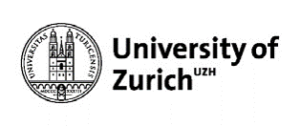Mobilise-D
Mobilise-D: Connecting digital mobility assessment to clinical outcomes for regulatory and clinical endorsement
Project leader: , , ,
Project members: , ,
Start date: 1. April 2019
End date: 31. March 2024
Funding source: Europäische Union (EU)
Abstract
Optimal treatment of the impaired mobility resulting from ageing and chronic disease is one of the 21st century's greatest challenges facing patients, society, governments, healthcare services, and science. New interventions are a key focus. However, to accelerate their development, we need better ways to detect and measure mobility loss. Digital technology, including body worn sensors, has the potential to revolutionise mobility assessment. The overarching objectives of MOBILISE-D are threefold: to deliver a valid solution (consisting of sensor, algorithms, data analytics, outcomes) for real-world digital mobility assessment; to validate digital outcomes in predicting clinical outcome in chronic obstructive pulmonary disease, Parkinson’s disease, multiple sclerosis, proximal femoral fracture recovery and congestive heart failure; and, to obtain key regulatory and health stakeholder approval for digital mobility assessment. The objectives address the call directly by linking digital assessment of mobility to clinical endpoints to support regulatory acceptance and clinical practice. MOBILISE-D consists of 35 partners from 13 countries with long, successful collaboration, combining the requisite expertise to address the technical and clinical challenges. To achieve the objectives, partners will jointly develop and implement a digital mobility assessment solution to demonstrate that real-world digital mobility outcomes can successfully predict relevant clinical outcomes and provide a better, safer and quicker way to arrive at the development of innovative medicines. MOBILISE-D's results will directly facilitate drug development, and establish the roadmap for clinical implementation of new, complementary tools to identify, stratify and monitor disability, so enabling widespread, cost-effective access to optimal clinical mobility management through personalised healthcare.
This project has received funding from the Innovative Medicines Initiative 2 Joint Undertaking under grant agreement No 820820. This Joint Undertaking receives support from the European Union’s Horizon 2020 research and innovation programme and EFPIA.
Related Publications
- , , , , , , , , :
Detection of Gait From Continuous Inertial Sensor Data Using Harmonic Frequencies
In: IEEE Journal of Biomedical and Health Informatics 24 (2020), p. 1869 - 1878
ISSN: 2168-2194
DOI: 10.1109/JBHI.2020.2975361
URL: https://www.mad.tf.fau.de/files/2020/11/2020_ullrich_gaitsequencedetection.pdf
BibTeX: Download - , , , , , , , , , , , , , , , , , , , , , , , , , , , , , , , , , , , , :
Walking-related digital mobility outcomes as clinical trial endpoint measures: protocol for a scoping review
In: BMJ Open 10 (2020), p. e038704-
ISSN: 2044-6055
DOI: 10.1136/bmjopen-2020-038704
BibTeX: Download - , , , , , , , , , , , , :
Consensus based framework for digital mobility monitoring
In: PLoS ONE 16 (2021)
ISSN: 1932-6203
DOI: 10.1371/journal.pone.0256541
BibTeX: Download - , , , , , , , , , , , , , , , , , , , , , , , , , , , , , , , , , , , , , , , , , , , , , , , , , , , , , , , , :
Technical validation of real-world monitoring of gait: a multicentric observational study
In: BMJ Open 11 (2021)
ISSN: 2044-6055
DOI: 10.1136/bmjopen-2021-050785
BibTeX: Download - , , , , , :
Machine learning-based distinction of left and right foot contacts in lower back inertial sensor gait data
2021 43rd Annual International Conference of the IEEE Engineering in Medicine & Biology Society (EMBC) (, 1. November 2021 - 5. November 2021)
DOI: 10.1109/EMBC46164.2021.9630653
BibTeX: Download
Partners



































